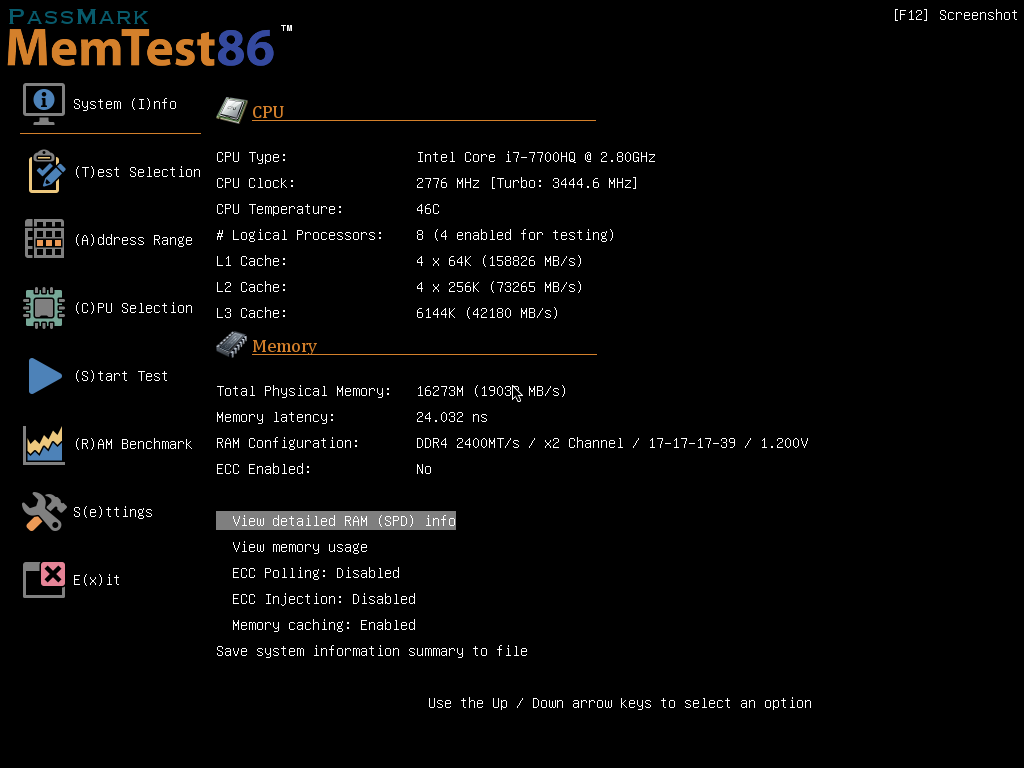
Once a MemTest86 boot disk has been created, it may be used on Any Windows, Linux or Mac system may be used to create the MemTest86 can boot from a USB flash drive or, with Linux systems, by the boot loader

See the feature comparison page for a summary of the differences between the various editions of MemTest86. See the What's New page for a complete list of changes.Secure Boot signed by Microsoft for ensuring software integrity.Full test automation via configuration file.Support for network PXE boot for scalable, diskless deployment to multiple targets.In all prior MemTest86 releases, there was no disk or network support. Support for storing logs and reports to disk/network.Real-time DIMM temperature reporting (limited to supported chipsets, ongoing development).Results summarized in a simplified graphical display/HTML report.

Per-module/per-chip error tracking and reporting.(limited hardware only)ĭIMM-level/chip-level error detection (limited to supported chipsets, ongoing development) Injection of ECC errors for test purposes.Reporting of detected and corrected ECC errors.Reporting of ECC capabilities and operation mode.This includes DDR5 RAM that support Intel XMP 3.0 profiles.ĮCC error reporting (limited to supported chipsets, ongoing development) Support for DDR5 RAM (and associated hardware), including retrieval and reporting of DDR5-specific SPD details.Reporting of detailed RAM SPD information including timings, clock speeds, vendor names and much more Reporting of configured RAM parameters including clock speed, timings, channel mode and voltages (limited to supported chipsets, ongoing development).Improved USB keyboard support, including systems that fail to emulate IO Port 64/60 correctly (eg.Graphical interface with mouse input where supported by the underlying UEFI system.Option to disable CPU caching for all or individual tests.Improved multi-threading support, where supported by the underlying UEFI system.



 0 kommentar(er)
0 kommentar(er)
